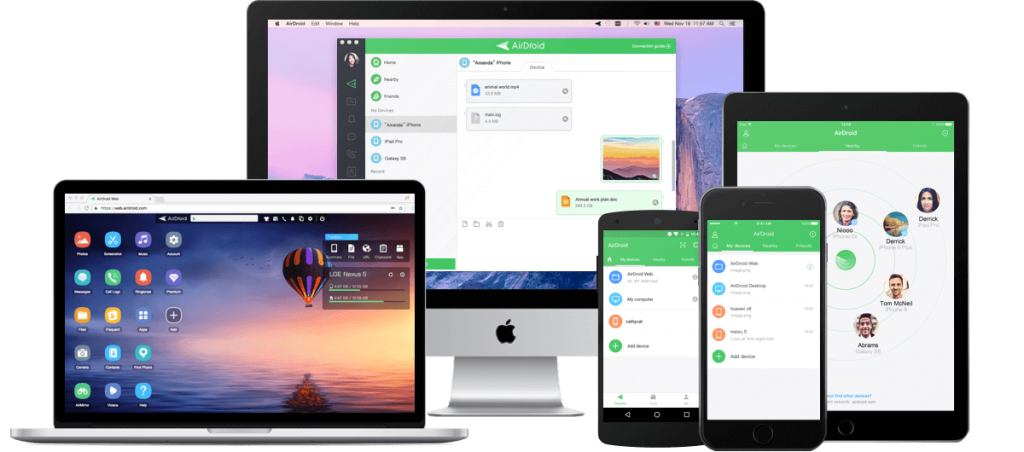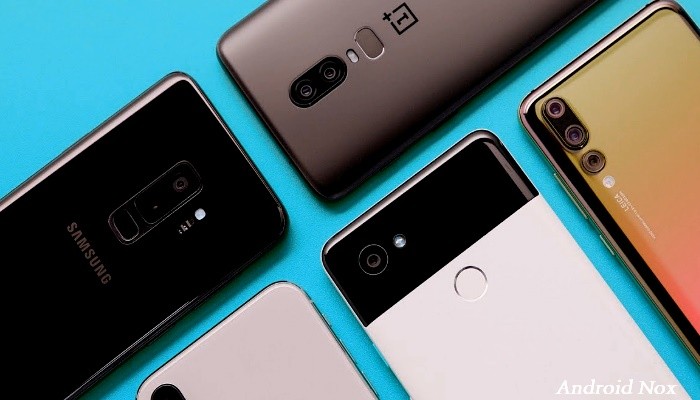Rooting is not as fashionable today as it was a few years ago, but there are still a lot of reasons to root Android phones, especially old phones that you have in drawers and may have a new use. Rooting an Android mobile can be complicated, although not for that reason impossible.
If you are thinking of rooting your mobile and you don’t even know where to start, here we summarize the four main methods. They will serve as a starting point to start you on this adventure that is to obtain root access on an Android mobile.
Before rooting

Before pressing “the red button”, it never hurts to remember the inconveniences of rooting a terminal. Although protection tools and services have improved over time, the probability of rendering the mobile unusable – commonly called brickeado– are still there.
On the other hand, some root tools try to hide their existence from the system, but they don’t always succeed. This means that some applications may stop working if they detect that the device is rooted, such as bank apps or games like Pokémon Go. In terminals that are still under warranty, it can also be a problem if you need to use the official technical service.
Root comes with a few risks. Do not proceed unless you understand and are willing to take them on.
With all this we do not want to take away the desire to root your terminal. The benefits are many, although they come with drawbacks. In the end, it will be you who must weigh the pros and cons and decide what is worth it, always at your own risk and expense.
With Android apps
 Kingo Root is one of the most popular rooting apps, although Play Protect complains if you try to install it
Kingo Root is one of the most popular rooting apps, although Play Protect complains if you try to install it We start our list with the easiest method, but not the most recommended for that: applications that grant you root permission with the touch of a button. Exist, exist, though its use is limited to a handful of models where security holes have been found that can be exploited to gain root permissions (generally quite old models). KingRoot is compatible from Android 2.0 to 6.0.
A popular app at the time was Kingo Root, sometimes called King Root and with other variants. Technically, it works -in some terminals- but it has the problem that after obtaining root permissions, there is no control over what the application does or stops doing with your mobile. An alternative is to use it only to obtain root permission, with the mobile without personal data, and then install another manager that is more reliable, such as an old version of SuperSu.
It is the fastest mode, but not the safest and only available on a handful of old phones
Using an application to root your mobile is undoubtedly the easiest way, although only available for a handful of terminals at least five years ago. That said, it is important to remember that they only work on certain models, so do not fall for applications that promise one-click root on many mobiles, especially on recent terminals.
With apps for Windows
The concept is exactly the same as the previous one, but carried out from a PC instead of a mobile app. The mobile must be connected to your PC via a USB cable, the developer options must be activated, as well as the USB debugging. The KingRoot itself that we mentioned before has a version for Windows, although other well-known names, such as OneClickRoot.
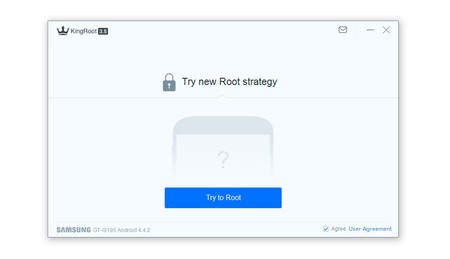
All-in-one applications to root from Windows can do their job with a few fewer restrictions than from mobile, although they still have the same problems: its success is only assured in a handful of models. Of course, in which it works, it works quite well: you press a button and wait until you have root access.
It doesn’t always work, but when it works it’s literally a matter of pressing a button and waiting
The security problem is the same as in the previous case. Unlike Magisk, which is open source, you must trust the word of the developers of these applications that will achieve root access and nothing else. Again, it is recommended that, if you want to try your luck, you do it with a mobile without data, factory restored.
With Magic
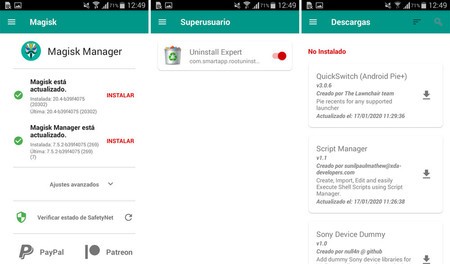 Magisk includes its own root permission manager
Magisk includes its own root permission manager Magisk is one of the few root tools that remains active and updated. Root access is only part of what Magisk offers, also notable for its ability to fool SafetyNet and for its modules ready to download and activate with just a few clicks.
Unlike the resources to root that we saw before, Magisk is open source, so that the user community can see what exactly it does and does not do. It is, therefore, a relatively safe method at least as far as the privacy of your data is concerned.
Magisk has the advantage of being open source, making it more reliable
There are mainly two ways to install Magisk: with root and without root. Obviously, if you want to use Magisk for root access, the former is left out, so you should instead be able to install it from a Custom Recovery like TWRP. Similarly, it is possible to install a Custom Recovery without the need for root, for example with Odin, on Samsung mobiles.

Flasheando
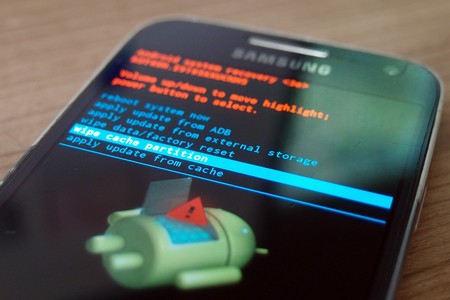
Speaking of Recovery Mode, this is another access point to get root access, depending on the options that are available. For example, on Samsung mobiles, patched firmware including root access such as CF-Auto-Root can be flashed directly with ODIN.
On other mobiles, it will be necessary to have a custom Recovery Mode installed such as TWRP or the old CWM to flash a ZIP file that includes everything you need to get root access. The problem here is that there is no universal solution, but you will have to find the exact solution for your specific model. The XDA forums are an excellent starting point to find the necessary instructions and files for a large number of Android phones.
In most cases, you will have to find and follow precise instructions to root “by hand”
This method is relatively the most complicated of all, because you need to find the instructions and specific files and follow them precisely, although it is also the most widespread. It will not serve you, yes, in those mobiles that have the bootloader blocked, such as Huawei mobiles.



